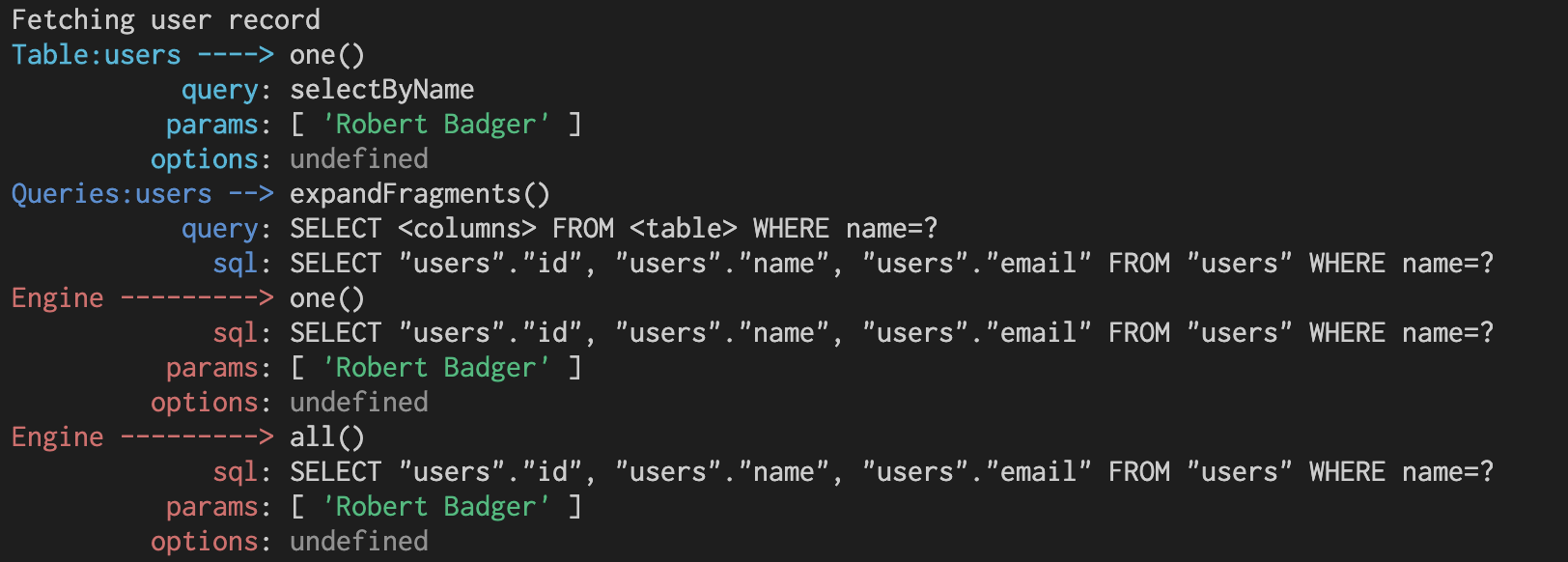Debugging
To enable debugging messages for the database library add the debug flag to the connect() configuration, set to true.
const db = connect({
database: 'sqlite:memory',
debug: true
})To enable debugging for individual tables, add the debug flag to the table configuration.
const db = connect({
database: 'sqlite:memory',
tables: {
users: {
columns: 'id name email',
debug: true,
}
}
})To enable debugging for a record object associated with a table, set the recordConfig for the table to include the debug flag.
const db = connect({
database: 'sqlite:memory',
tables: {
users: {
columns: 'id name email',
recordConfig: {
debug: true
}
}
}
})To enable debugging on a global level (for example, to enable it for all tables, records, etc.), use the setDebug function. You can set any of the following flags to true to enable debugging for that component.
import { connect, setDebug } from '../src/Utils/Debug.js';
setDebug({
database: true, // general database queries
engine: true, // lower level functionality
builder: true, // query builder
tables: true, // table provider
table: true, // table methods
record: true, // record methods
})Debugging messages are formatted with a colored prefix to help you identify where the error came from.

You can change the debug message prefix for different components and the color that it is rendered in.
setDebug({
engine: {
debug: true,
prefix: 'Snake!',
color: 'red'
}
})The available colors are: black, red, green, yellow, blue, magenta, cyan, grey and white. You can also prefix any of them with bright or dark, e.g. dark red, bright yellow, etc.
You can specify the color as an object containing fg to set the foreground color and bg to set the background color independently. Note that the bright and dark prefixes might not work as you expect, e.g. both foreground and background will end up bright or dark, even if you only add the modified to one or the other.
setDebug({
engine: {
debug: true,
prefix: 'Snake!',
color: { fg: 'yellow', bg: 'blue' }
}
})Inside a custom table or record module you can print debugging messages to the console using the debug() method. If debugging is enabled for the module then it will be printed to the console. Otherwise it will be ignored.
export class User extends Record {
helloWorld() {
this.debug("helloWorld()");
// ...your code goes here...
}
}You can use the debugData() method to generate debugging messages to display the contents of data items. This is a useful way to inspect the parameters passed to a method. Again, it will only generate output if debugging is enabled for that module so you can safely add these lines to your code and enabled them by setting the debug option when you need to.
export class User extends Record {
helloWorld(message, options) {
this.debugData("helloWorld()", { message, options });
// ...your code goes here...
}
}